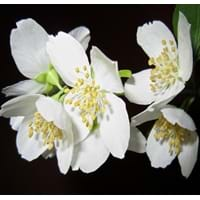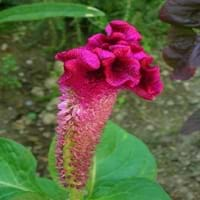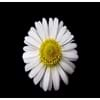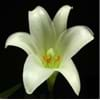Color
White, Yellow
Pink, Purple, Red
Color Meaning
White - Purity and Innocence, Yellow - Happiness and Friendship
Pink - Sensitivity and Love, Purple - Elegance and Pride, Red - Courage, Desire and Love
Fragrance
Aromatic
Floral
Line
Not Available
Not Available
Silhouette
Not Available
Not Available
Blossom Texture
Not Available
Not Available
Form
Not Available
Not Available
Sunlight
Full Sun
Full Sun
Watering
Enough
Diligently
Essential Fertilizers
Phosphorus
Lime stone, Sulphur
Common Pests and Diseases
List of Pests
Aphids, butterflies, Caterpillars, Mites, moths, Scale, Whiteflies
Unknown
List of Diseases
blight, Nematodes, Wilt
Unknown
Bloom Time
All Summer Season, Spring Season, Winter Season
All Summer Season, Fall Season, Spring Season
Origin
China, Himalayas, Tibet
Africa, Asia, Europe, North America
Interesting Facts of
- Jasmine releases intoxicating perfume at nightand thus also known as the "Queen of the Night" in India.
- The name Jasmine is derived from the Persia 'yasmin' which means a fragrant flower.
- The Rose comes in various colors, although a "black rose " is not literally black but a dark red.
- A single rose suggests utmost devotion while two rose entwined together says "Marry me".
Lifespan
Perennials - a plant that lives for three or more years
Annuals - complete its full life cycle in one growing season
Uses
Not Available
Not Available
Health Benefits
Good remedy for Diarrhea, Reduces risk of cancer
Unknown
Medicinal Uses
Acts as a antidepressant, Acts as a antispasmodic, Acts as an Astringent
Unknown
Culinary Uses
Used as flavor food in deserts and ice creams
Unknown
Cosmetic Uses
Best for Dry sensitive skin, Softens skin, Used in creams, hand lotions and in essential oils, Used in Perfumes, Used in shampoos and soaps
Best for Healing, Unknown, Used after facial and cleansing
Occasional Uses
Decoration, Wedding
Anniversary, Valentine's Day, Wedding
Allergy
Asthma, Headache, Itching, Runny nose, Sinus pain, Sneezing
Unknown
Scientific Name
Jasminum
Amaranthus
Sub kingdom
Tracheobionta
Tracheobionta
Super Division
Spermatophyte
Spermatophyte
Division
Magnoliophyta
Magnoliophyta
Order
Scrophulariales
Caryophyllales
Class
Magnoliopsida
Magnoliopsida
Family
Oleaceae
Amaranthaceae
Sub Family
NA
Amaranthoideae
Genus
Not Available
Not Available
Number of Species
Not Available
Not Available
More about Jasmine and Amaranth Facts and color
You must be curious to know more about Jasmine and Amaranth facts and color. flowers.comparespecies.com will let you know all the Interesting Facts about Jasmine and Amaranth. Jasmine comes in White, Yellow colors whereas Amaranth flowers are with Pink, Purple, Red colors. Other Jasmine and Amaranth facts will definitely amuse you.
Jasmine and Amaranth growing conditions
Absolute growing condition is the only key to keep plants in good health and in good shape. Let’s learn about essential Jasmine and Amaranth growing conditions. Jasmine requires Full Sun and Enough watering with 5.50 of Loamy soil. Amaranth needs Full Sun and Diligently watering with 5.50 of Loamy soil. Get other Jasmine and Amaranth facts in the sections below.
Jasmine and Amaranth Facts
Want to know about Jasmine and Amaranth facts? Get all the Jasmine and Amaranth facts here.
Jasmine and Amaranth Classification
After knowing about various Jasmine and Amaranth facts, let's study their classification. Based on genetic and physical features, Jasmine and Amaranth classification starts with knowing their scientific name. The scientific name of Jasmine and Amaranth is Jasminum and Amaranthus respectively. Jasmine belongs to Oleaceae family whereas Amaranth falls under Amaranthaceae family. Also check out Flowers by Color so as to plant colorful aroma in the garden.





